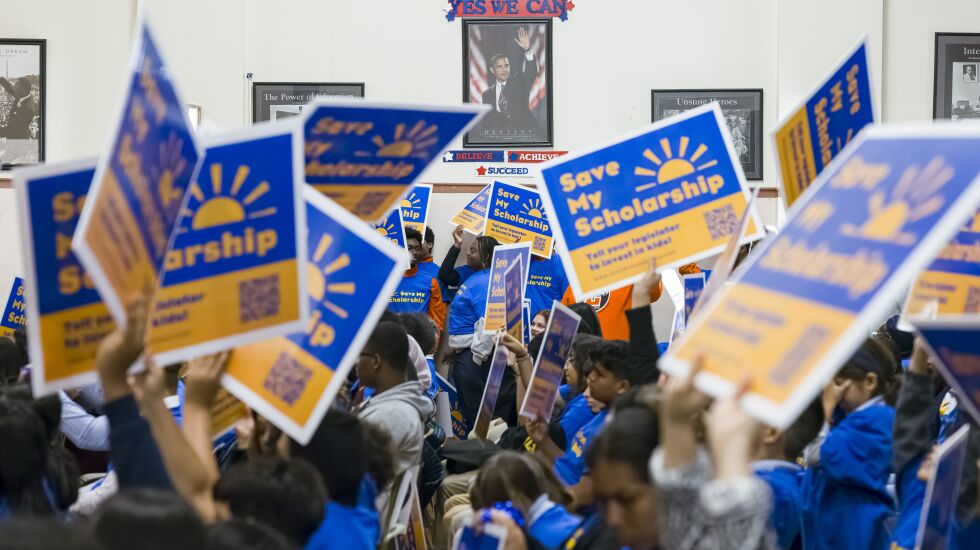
State lawmakers this week are considering extending the controversial Invest in Kids private school scholarship program. The five-year-old program is set to sunset at the end of this year, but there’s a strong push by supporters to keep it alive. The fall veto legislative session began on Tuesday and ends on Thursday. A compromise proposal from House Democrats for extending the program calls for sharpening the focus on lower-income students and shrinking it to a $50 million program.
How it works
Under this $75 million program, taxpayers can earn an income tax credit by donating to scholarship funds around the state that send lower-income students to private schools. About 9,700 Illinois students received a scholarship last school year.
Students can apply from families making no more than 300% of the federal poverty level: To qualify, a family of four can’t make more than $90,000 a year. About two-thirds of scholarship recipients last school year came from families earning $55,500 or less, state data shows.
Currently 22 states have partial or full tax-credit scholarship programs, according to the nonprofit Ed Choice. The group says there are about 317,000 scholarship recipients in those 22 states, and Pennsylvania has the largest program, with nearly 45,000 participants. Arizona created the first program in 1997.
If Illinois’ program isn’t extended past its December expiration date, students can remain in their schools on scholarship through the end of this school year; however, they won’t be able to renew for the following year, according to Empower Illinois, the state’s largest scholarship-granting organization.
Why it’s controversial
Supporters argue the program allows for school choice, particularly for lower-income families, without undermining public schools. But critics say the program diverts up to $75 million each year from state coffers that could go to public schools, which are underfunded. Opponents call it a back-door voucher program.
WBEZ first started covering the Invest in Kids program in 2017, when it passed as part of an overhaul of the state’s public school funding formula. At the time, WBEZ dug deep into the new program, raising questions about who the program was for and who benefited financially.
In a story from August 2018, when the first scholarship recipients were headed to school, WBEZ detailed some of the law’s most contentious elements, including:
- How it got around a state prohibition on sending money to religious schools;
- The fact that some of the scholarship students were already attending private school before the program began;
- That nearly one-third of the students receiving scholarships weren’t considered low-income;
- And how this new school choice program was passed with almost no public vetting or debate.
Kate Grossman is WBEZ’s education editor. Follow her @WBEZeducation and @KateGrossman1.







